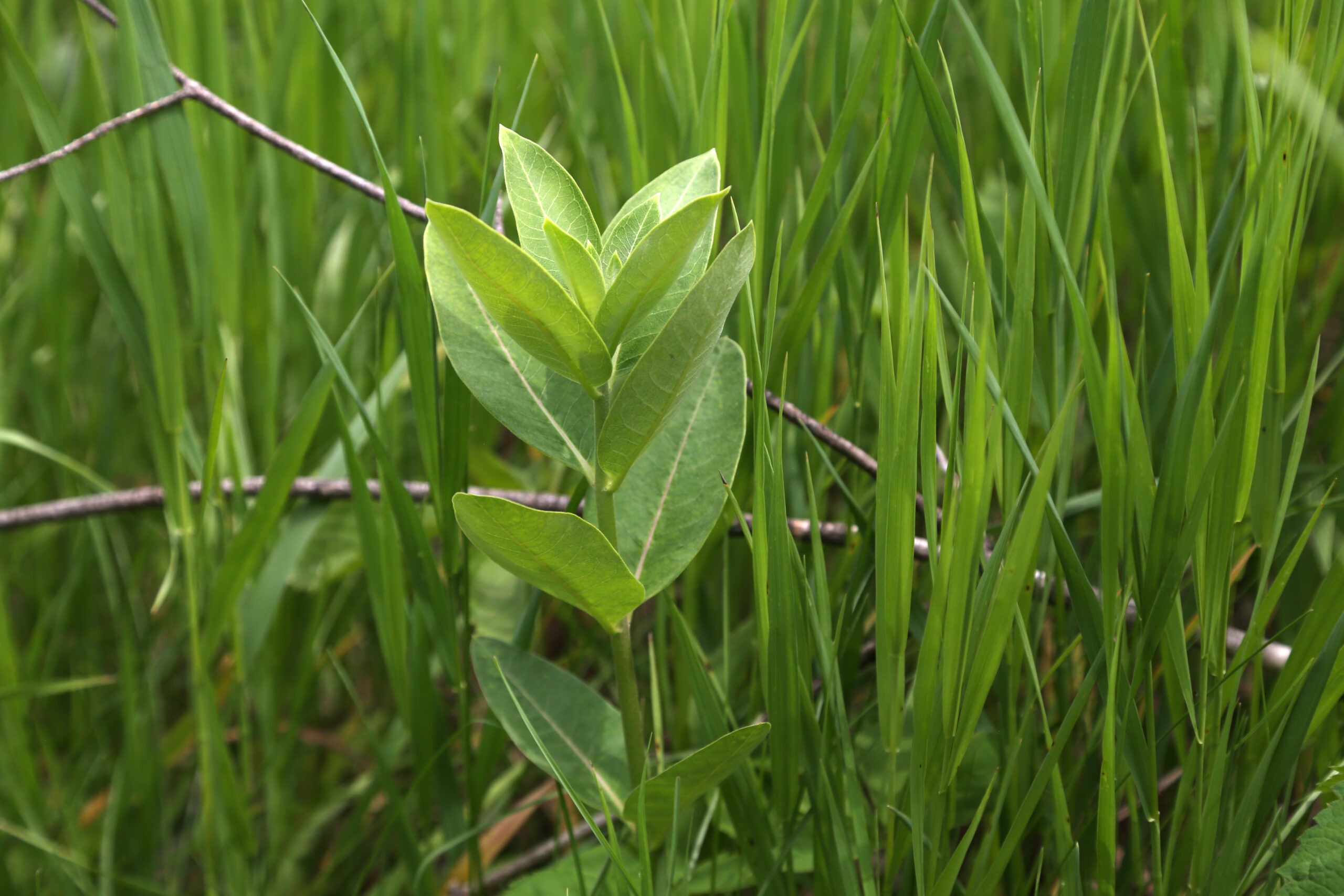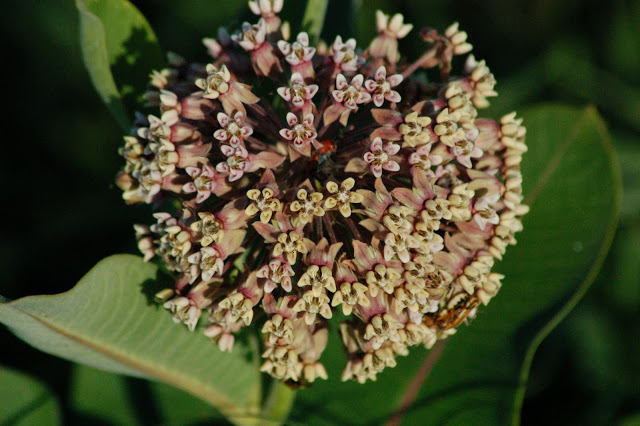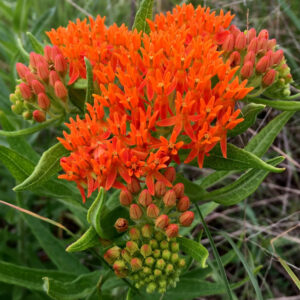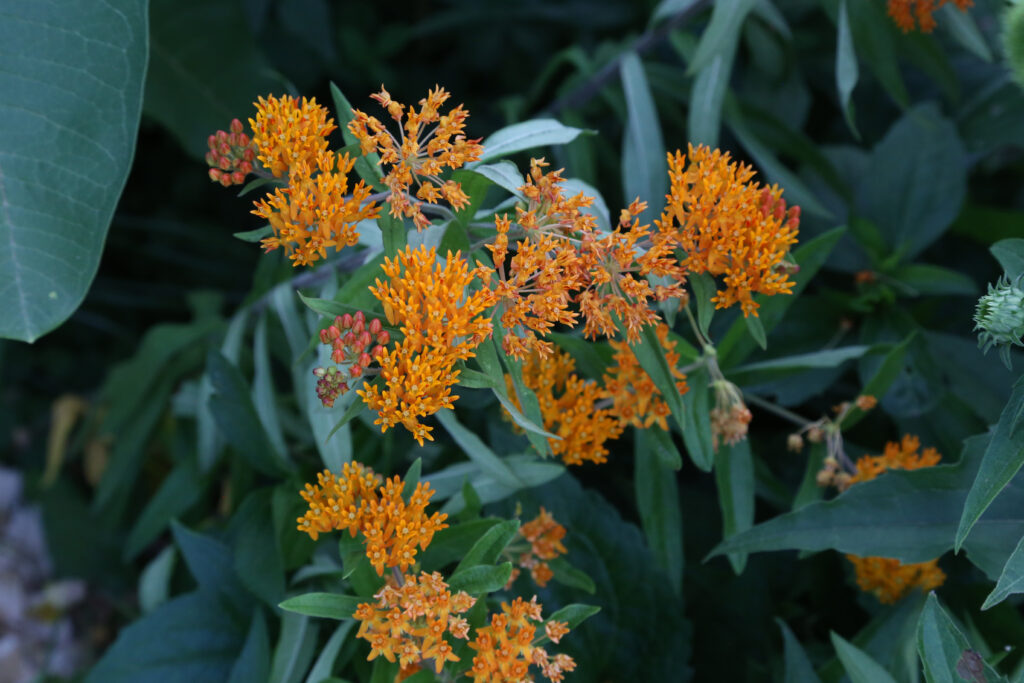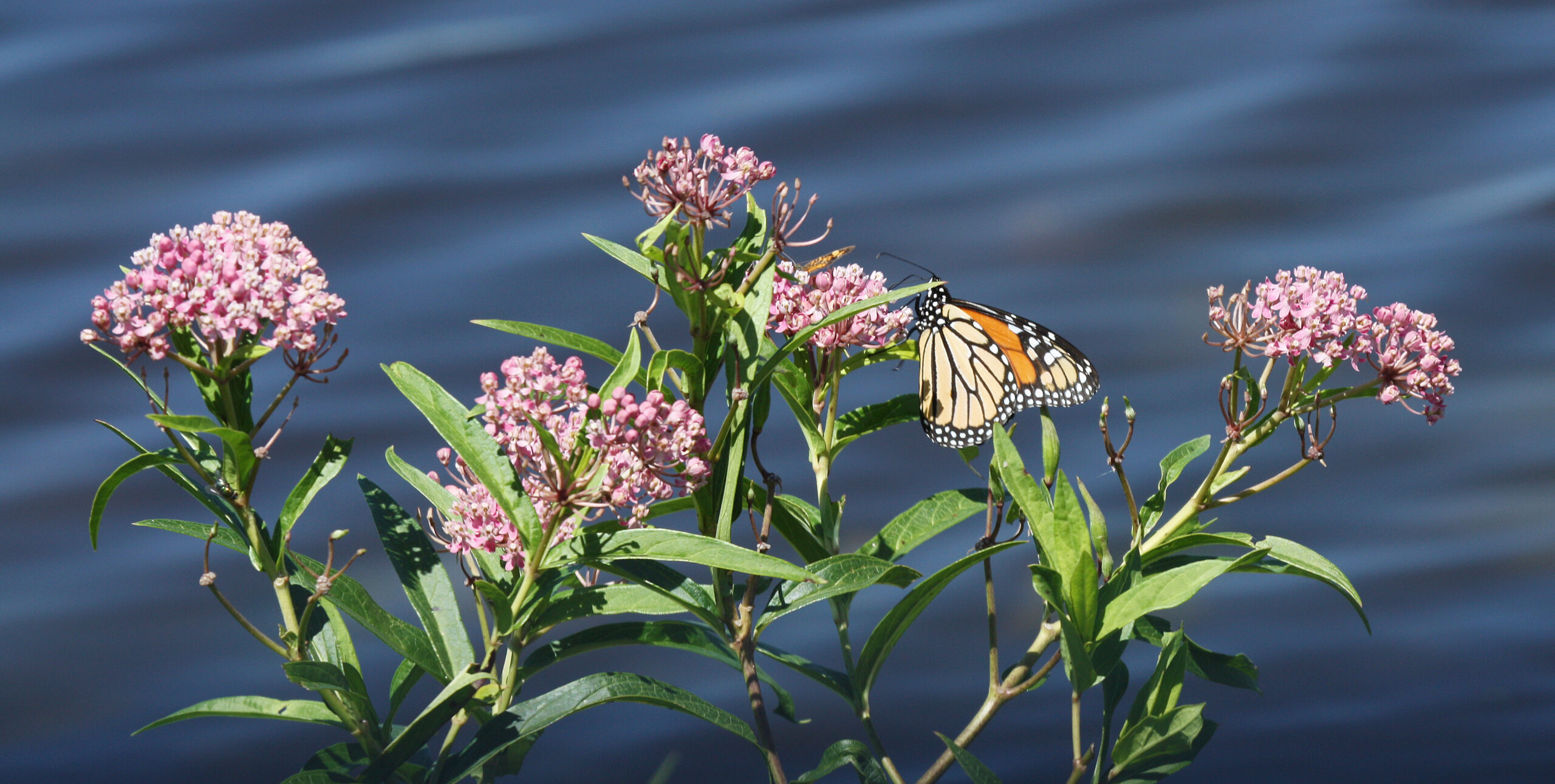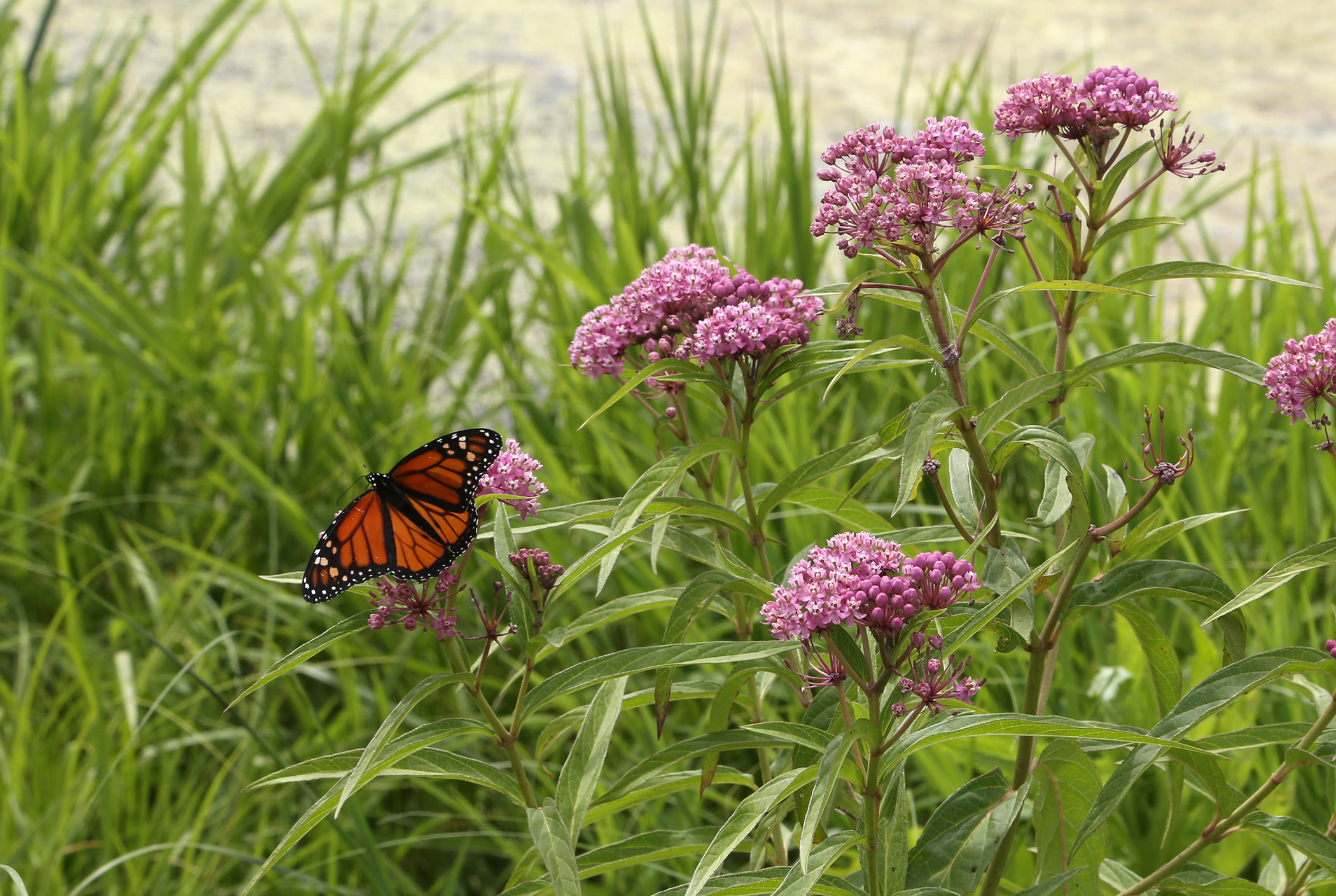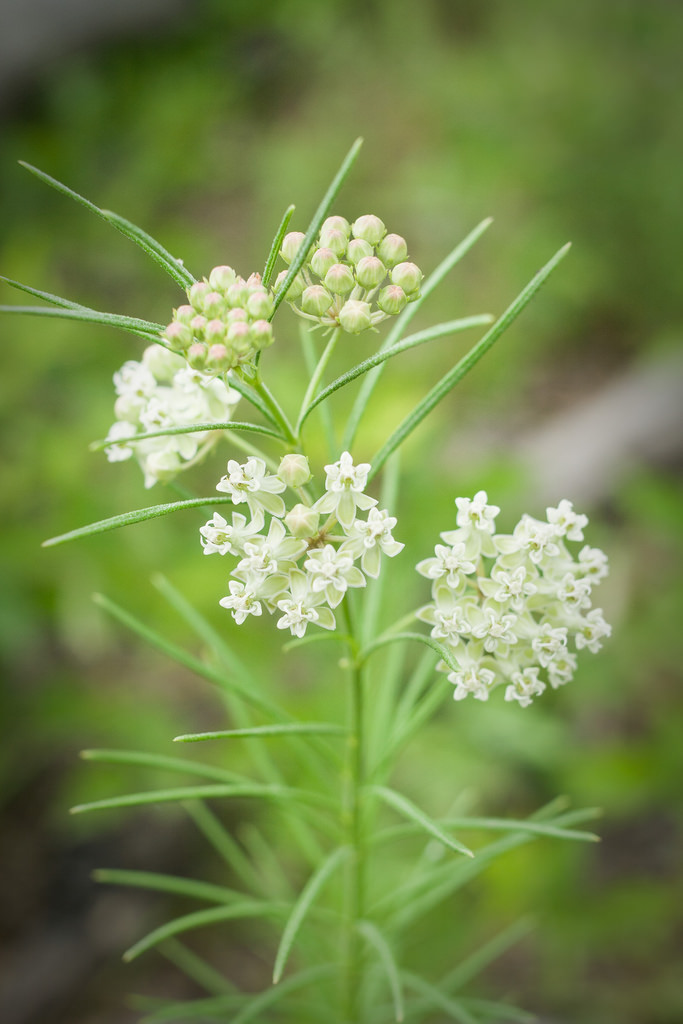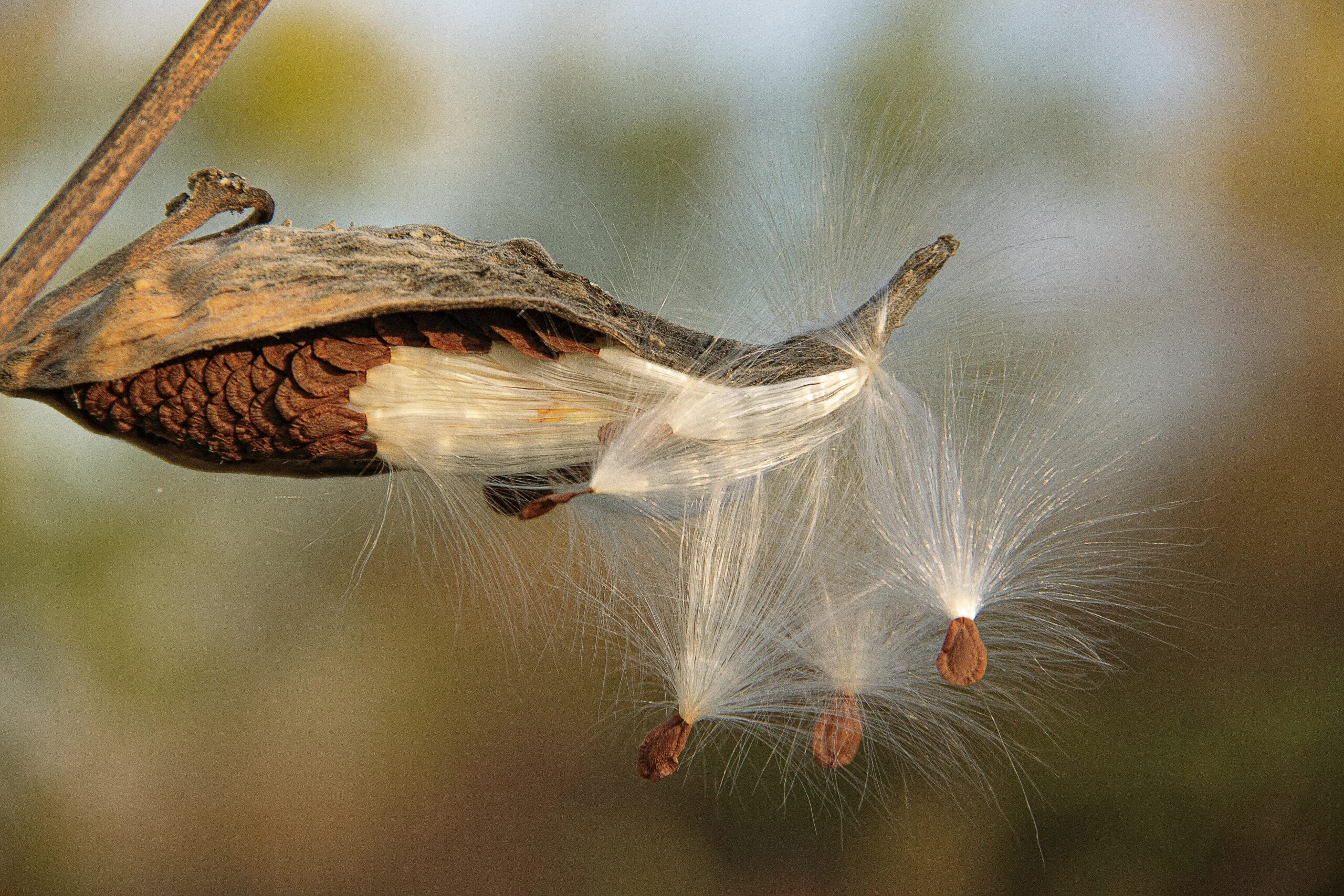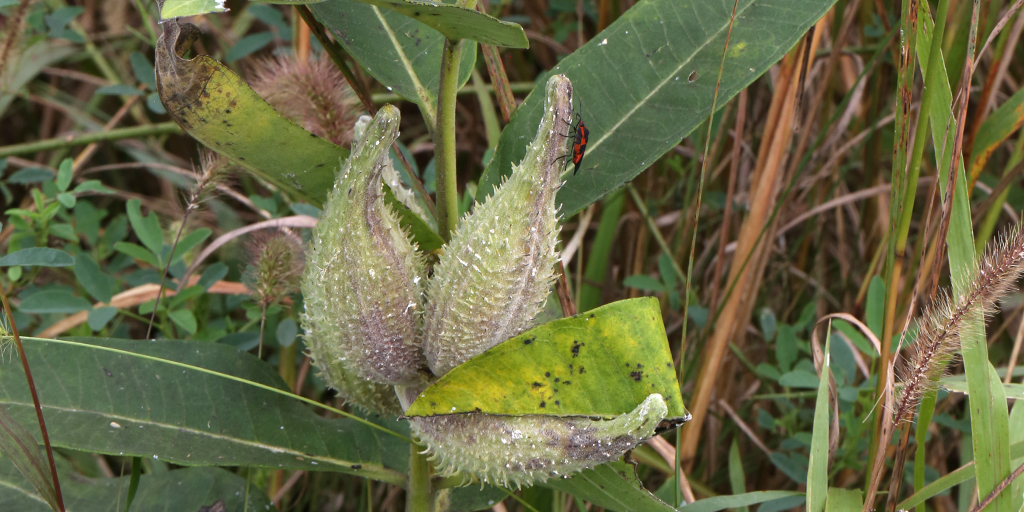Milkweed is important! Not only do they provide beautiful flowers, but they are the host plant of Monarch Butterflies. Monarch caterpillars feed on the milky sap and leaves as they grow. Iowa has 18 native species of Milkweed, but I am going to cover the 4 most common. They are perennial plants and can grow in a wide variety of habitats. Milkweed make up the Asclepiadaceae family. This scientific name comes from the Greek God of healing and medicine; Asclepius.
Common milkweed (Asclepias syriaca) is probably what you think of when you hear the name milkweed. They have beautiful large blooms of pink flowers, typically from June until August. When under the right conditions, they can grow up to 6 feet tall! You can find common milkweed almost anywhere including fields, prairies, ditches, and disturbed areas.
Butterfly milkweed (Asclepias tuberosa) have vibrant orange flowers. These beautiful plants only grow up to 3 feet tall and stay tidy. They are a perfect option for your gardens! They bloom from June until August and their leaves are rough and narrow. They establish in dry open habitats like old fields and prairies. Unlike the rest of the milkweed on this list, butterfly milkweed does not have milky white sap.
Swamp milkweed (Asclepias incarnata) is one of the Monarch Butterfly’s favorite types of milkweed. You might also hear it referred to as rose milkweed. They have narrow leaves and bright pink flowers. Swamp milkweed blooms from July to August. They also smell just like bubblegum, so if you see one in the wild make sure to give it a sniff. Just make sure you don’t accidentally startle any stinging insects! These plants like to grow in wet soils on the edges of prairie potholes and marshes. They can grow to over 5 feet tall.
Whorled milkweed (Asclepias verticillata) spreads via seeds and rhizomes. Their leaves are thin and narrow and can look like needles. A monarch caterpillar can eat several plants. They can grow up to 3 feet tall, but most of the time they are much shorter. They bloom from July to September and have little white flowers. Whorled milkweed are one of the last blooming milkweed, which makes it a particularly important source of food for monarchs.
Milkweed have seed pods. You may have seen these pods cracked open in the fall or individual seeds floating gracefully in the air. If you plan on harvesting your own and planting them, the time to plant is now! Planting in the fall is exactly what milkweed needs to germinate. They require a cold period of weather followed by a warm period of weather; this is called cold stratification.
So now that you know all about milkweed, it is time to go grow some! Plant them everywhere! Plant them in your front yard, in your back yard, in all of your gardens, in your parent’s gardens. I love milkweed and so will you.

